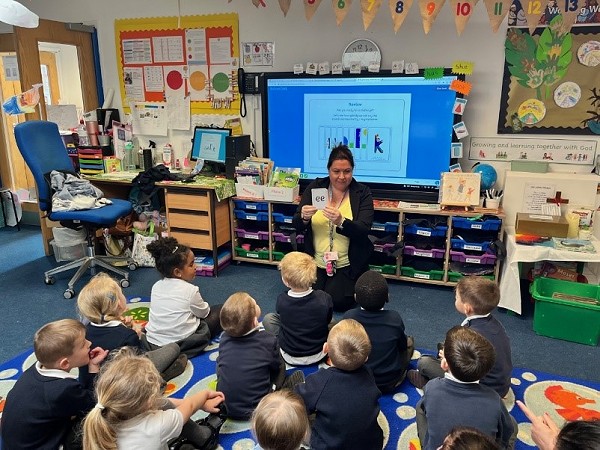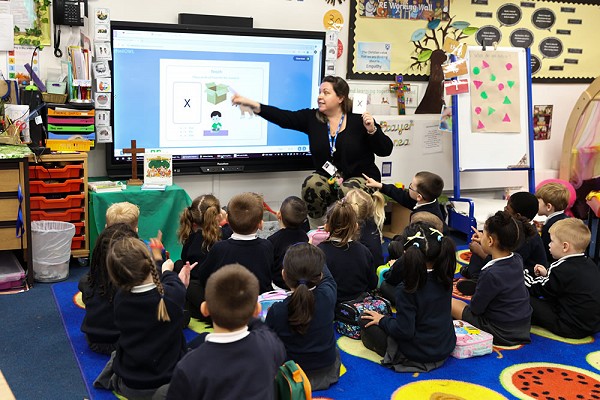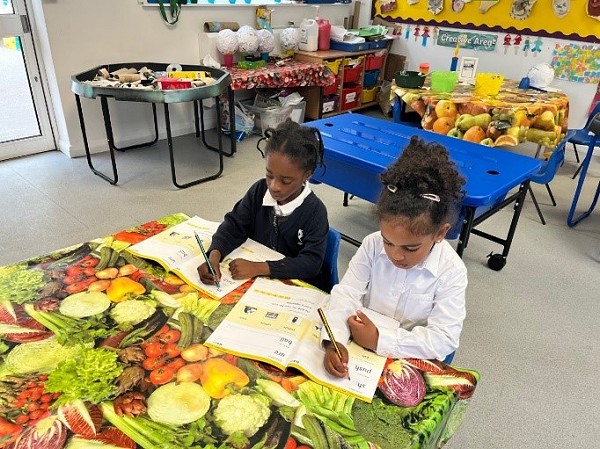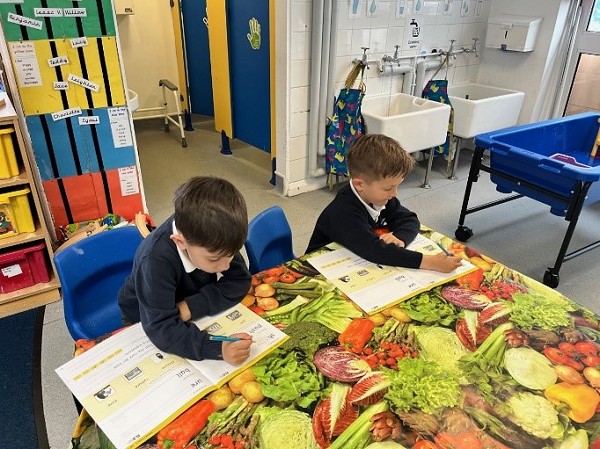Phonics
A Systematic Synthetic Phonics Programme is fundamental to the teaching of Early Reading in EYFS and across KS1. At St Andrew’s we follow the ‘Essential Letters and Sounds’ programme. This begins at the earliest possible opportunity in Reception and continues through to the end of year 1 and into year 2 where necessary for some children. It consists of 5 phases that cover all 44 phonemes in the English language, as well as teaching children how to blend phonemes for reading and segment for spelling.
*A phoneme is the smallest unit of sound in speech. A grapheme is a letter or a number of letters that represent a sound (phoneme) in a word.
Phase 1
This phase begins in Nursery. Children become familiar with environmental sounds, instrumental sounds, body sounds, rhythm and rhyme, alliteration and voice sounds. They learn to listen to and repeat sounds accurately.
Phase 2
Phase two begins as early in Reception as possible. Children learn the first 23 phonemes and graphemes. They also develop and work hard at oral blending and segmenting skills. Children learn to blend sounds together to make words. Children work towards being able to read CVC words and simple captions. For example, ‘leg’, ‘pen’ ‘mat’ and ‘A run in the sun’. Each day they use a variety of skills including listening for blending, reading for blending, writing, and speech and language.
Phase 3 and 4
In Phase 3, Children learn a further 29 graphemes and their corresponding phonemes. They focus heavily on application of their blending skills to incorporate these new sounds into reading and practice fluency. Phase 4 is incorporated into all the phases as it focuses primarily on paying attention to blending skills and applying this skill to reading real books. At the end of Reception, children begin to learn the sounds from phase 5.
Phase 5
In Year 1, children continue with phase 5 and learn the final 20 graphemes which include some alternative spellings of sounds they already know e.g. ‘ai’ is learnt at phase 3 and ‘ay’ is learnt at phase 5 – both graphemes make the same sound. Again, heavy emphasis is placed on decoding and blending to add to fluency when the child reads.
Later in Phase 5, children also learn different ways of pronouncing the graphemes they already know. For example, they know ‘c’ as in ‘cat’ but also learn ‘c’ as in ‘cell’.
As the ‘Essential Letters and Sounds’ programme draws to a close, Children work on applying their phonic knowledge to their spelling. This includes using prefixes and suffixes, and doubling and dropping letters etc. We use ‘Spelling shed’ to support this developing skill.
Phonics lessons take place every day in EYFS and year 1 and spelling lessons are taught daily in year 2. Each day children are required to use a variety of skills including listening for blending, reading for blending, writing, and speech and language.
In addition to this, we ask that children read every day at home. We send home fully decodable books that are entirely in line with the sounds that the children have been exposed to and therefore gives them the greatest opportunity to practice their new skills.
If you are interested in further information, the link below is to the Essential Letters and Sounds website




